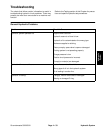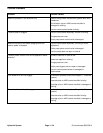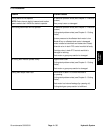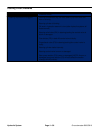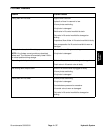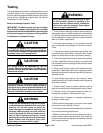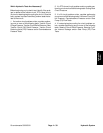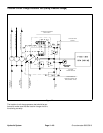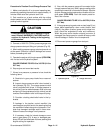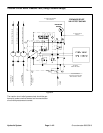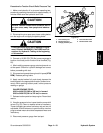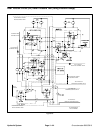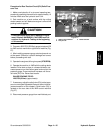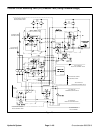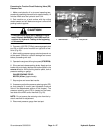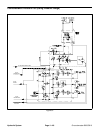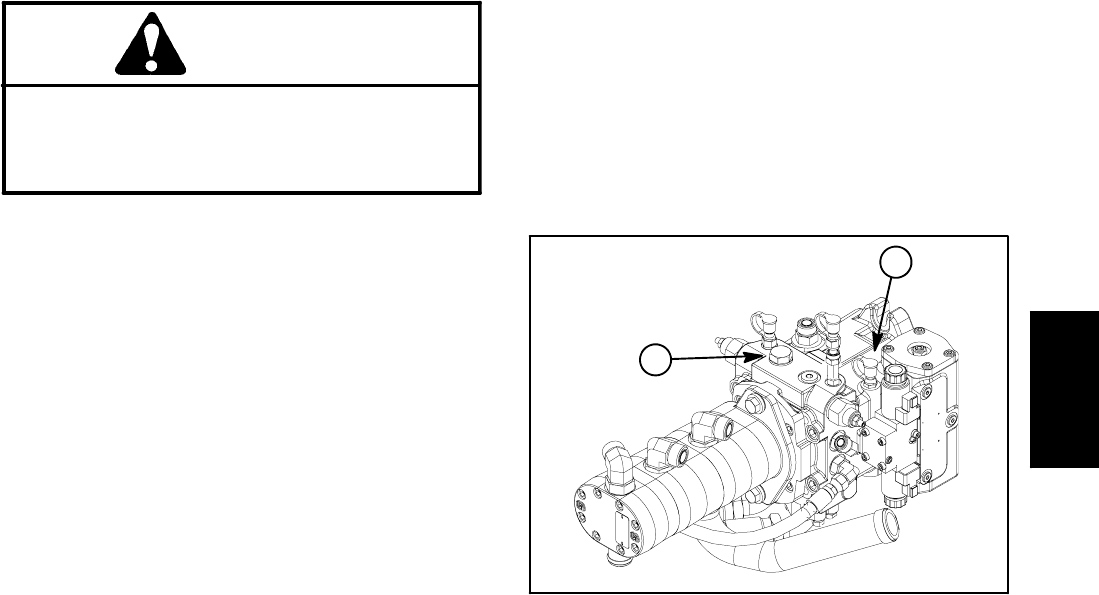
Groundsmaster 5900/5910 Hydraulic SystemPage 4 -- 41
ProcedureforTractionCircuit Charge Pressure Test
1. Make sure hydraulic oil is at normal operating tem-
perature by operating the machine for approximately 10
minutes. Make sure the hydraulic tank is full.
2. Park machine on a level surface with the cutting
decks lowered and off. Make sure engine is off and the
parking brake is applied.
CAUTION
Prevent personal injury and/or damage to equip-
ment. Read all WARNINGS, CAUTIONS and Pre-
cautions for Hydraulic Testing at the beginning
of this section.
3. Connect a 1000 PSI (70 Bar) pressure gauge onto
charge pressure test port fitting on hydrostat (Fig. 23).
4. After installing pressure gauge, start engine and run
at idle speed. Check for hydraulic leakage and correct
before proceeding with test.
5. Operate the engine at full engine speed (2750 RPM)
with no load on the hydraulic system.
GAUGE READING TO BE 315 to 345 PSI (21.8 to
23.7 bar).
6. Stop engine and record test results.
7. If there is no pressure, or pressure is low, check the
following items:
A. Restriction in gear pump intake line or reservoir
strainer.
B. Inspect charge pressure relief valve located in
the hydrostat (Fig. 23). The charge pressure relief
valve is adjusted with shims. If charge pressure is
low, shim(s) can be added between relief valve cap
and spring.Ifchargepressureis high, shim(s) can be
removed from between relief valve cap and spring.
C. Consider a leaking check/relief valve in the hy-
drostat.
D. Leakage in the traction control manifold, the
mow/transport manifold and/or the steering/cooling
fan manifold will affect charge circuit pressure. C on-
sider that damaged cartridge seals in these man-
ifolds will cause low charge circuit pressure.
E. If necessary, check for internal damage or worn
parts in gear pump (P3). A worn or damaged gear
pump (P3) will also affectdeck lift/lower,steeringand
engine cooling fan operation.
8. Also, with the pressure gauge still connected to the
charge pressure test port, take a gauge reading while
operating the machine in forward and reverse. Start the
engine, release parking brake and put throttle at full en-
gine speed (2750 RPM). Push the traction pedal for-
ward, then reverse.
GAUGE READING TO BE 315 to 345 PSI (21.8 to
23.7 bar).
9. Ifcharge pressure is good under no load (step 5), but
drops below specification when under traction load
(step 8), the piston (traction) pump and/or wheel mo-
tor(s) should be suspected of wear and inefficiency.
When the pump and/or traction motor(s) are worn or
damaged, the charge pump is not able to keep up with
internal leakage in traction circuit components.
10.Disconnect pressure gauge from test port.
1. Hydrostat port G 2. Charge relief valve
Figure 23
2
1
Hydraulic
System



